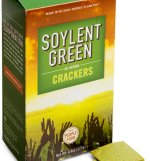How do you feed your crews on your ships or in the field? Do you have a ship's galley or kitchen? Or do you have a nutri-matic you stole from Douglas Adams that when you press a button dispenses something that is almost, but not quite, entirely unlike anything you'd actually want to eat?
I thought I'd borrow these definitions from the army:
A-Ration (Garrison Ration) - Fresh, refrigerated, or frozen food prepared in kitchen
B-Ration (Field Ration) - Canned, packaged, or preserved foods prepared in kitchen without refrigeration
C-Ration (Individual Ration) - Complete, pre-cooked, ready-to-eat individual meal (also known as MRE)
Adding to this list:
S-Ration (Survival Ration) - compact packaged food that can be stored for a long time, high in carbs and calories.
G-Ration (Geedunk Ration) - Cookies, candies, assorted snacks.
You need to feed your crews, so how do you do it?
I thought I'd borrow these definitions from the army:
A-Ration (Garrison Ration) - Fresh, refrigerated, or frozen food prepared in kitchen
B-Ration (Field Ration) - Canned, packaged, or preserved foods prepared in kitchen without refrigeration
C-Ration (Individual Ration) - Complete, pre-cooked, ready-to-eat individual meal (also known as MRE)
Adding to this list:
S-Ration (Survival Ration) - compact packaged food that can be stored for a long time, high in carbs and calories.
G-Ration (Geedunk Ration) - Cookies, candies, assorted snacks.
You need to feed your crews, so how do you do it?



